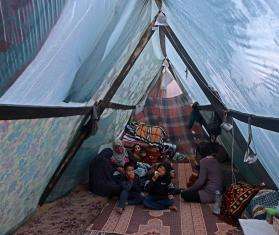MSF Releases HIV Drug Pricing Report at Rome AIDS Conference
Several pharmaceutical companies have abandoned HIV drug discount programs in middle-income countries, according to an HIV drug price report released by MSF.
ROME, July 18, 2011—Several pharmaceutical companies have abandoned HIV drug discount programs in middle-income countries, according to an HIV drug price report released today by the international medical humanitarian organization Doctors Without Borders/Médecins Sans Frontières (MSF) at the International AIDS Society Conference in Rome.
The report, Untangling the Web of ARV Price Reductions, which analyzes the prices of 23 antiretrovirals (ARVs) with information provided by 19 manufacturers, also shows continued trends of price reductions for drugs not blocked by patents.
“While there is continued progress to reduce prices for the poorest countries, a significant number of people with HIV/AIDS live in countries that are now excluded from price reductions,” said Nathan Ford, medical director of MSF’s Campaign for Access to Essential Medicines.
For more information on MSF at the IAS Conference in Rome, visit: aids2011.msf.org
Tibotec/Johnson & Johnson exclude all countries classified as ‘middle-income’ from their price reductions; Abbott excludes low-income and lower middle-income countries from discounts for one of its drugs; and ViiV (Pfizer + GlaxoSmithKline) no longer offers reduced prices to middle-income countries, even when programs are fully funded by the Global Fund to fight AIDS, TB, and Malaria or the US-government’s PEPFAR program.
In a reversal, Merck has now announced that it will no longer issue price discounts for 49 middle-income countries for its new drug raltegravir. This move leaves out countries with large numbers of people living with HIV/AIDS, such as India, Indonesia, Thailand, Vietnam, Ukraine, Colombia, and Brazil. Today, Brazil is paying $5,870 per patient per year (ppy) for just this one HIV drug; in least-developed countries, Merck charges $675 ppy for the drug, which is already four times the price of the recommended triple first-line combination (TDF/3TC/EFV).
This development comes on the heels of a number of developing countries being excluded from last week’s agreement between drug company Gilead and the new Medicines Patent Pool, which aims to increase access to affordable ARVs by negotiating licensing that can be used by generic manufacturers.
MSF started HIV treatment programs in Latin America and Asia over 10 years ago, but has since handed many of them over to local authorities in the confidence that people would be able to access the treatment they need from government programs. People in these countries in particular have been on HIV treatment for a number of years now, and therefore need access to newer drugs – but patents block access to more affordable generics.
“Drug company discount programs have proven not to be a long-term solution,” said Janice Lee, HIV/AIDS pharmacist at MSF’s Campaign for Access to Essential Medicines. “When patents get in the way and drug companies refuse to cut prices, governments are going to have to start overriding patents so that they can afford to keep their HIV-positive people alive.”
‘Compulsory licenses’ issued by Thailand and Brazil for HIV medicines in 2006 and 2007 helped dramatically bring prices down when patents formed a barrier to people’s access. But despite the fact that these measures are authorized by international trade rules, countries have faced retaliatory measures from pharmaceutical companies and governments.
The MSF price report also shows good news. Thanks to continued generic competition, the critical drug tenofovir now costs $76 ppy, which is cheaper than the price of zidovudine (AZT), which costs $88 ppy. This means it is becoming more affordable for countries to shift to using World Health Organization-recommended improved combinations with tenofovir and move away from the drug stavudine (d4T), which has significant long-term side effects.
The price of a one-pill-once-a-day combination that contains tenofovir has come down by 70 percent since the WHO recommended people move to less-toxic treatment five years ago, from US$613 to $173 ppy today.
“We’re seeing drug prices continue to decline when patents do not form a barrier to generic production,” said MSF pharmacist Janice Lee. “These reductions increase the feasibility of reaching the new UN goal of getting 15 million people on treatment by 2015.”
MSF provides antiretroviral treatment to 170,000 people in 19 countries.
The latest edition of Untangling the Web of Antiretroviral Price Reductions (UTW), released at the IAS 2011 in Rome, demonstrates a growing and deadly divide in ARV prices offered to the poorest countries versus lower and middle-income countries that are still grappling with the scale-up of lifesaving HIV treatment.
UTW includes information on the evolution in price for each ARV over time, charting the difference between the originator price and the lowest price available from generic producers for developing countries. UTW also highlights access issues for each drug, outlining patent restrictions, pricing differentials (tiered prices) formiddle-income countries and the status of pediatric formulations. The 14thedition of UTW additionally covers issues that have emerged in access to ARV and the associated problems with development of pediatric formulations and scale-up using newer drugs. Download the updated report and previous versionshere.




